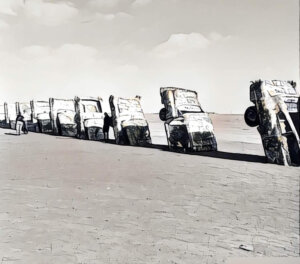What is the “new normal” for semiconductors?
Jim Walker, Research VP, Semiconductor Manufacturing, Gartner, closed out Q3 2016 with his informative talk at the IMAPS | MEPTEC | SEMI Northern California Chapter luncheon meeting on September 28, 2016, at SEMI HQ in San Jose, California, addressing the topic of the “New Normal” for Semiconductors.
Remember diagraming P.E.S.T analyses in MBA 101? Remember what a P.E.S.T. analysis is? (My answer: looking at the Political, Economic, Social, and Technological factors that influence / perturb markets, and that set the course of their growth or decline.)
Jim, in his talk, rather neatly covered all.
Politically, you might have heard there’s a small election being held in six weeks, one that will likely greatly influence the world economic seas; seas on which our semiconductor industry bobs and floats.
And it’s too close to call, folks, which way that one’s going to go.
 Also, as McKinsey has opined, “China is stepping up efforts to become a major player in semiconductor design and manufacturing. If it succeeds, integrated-circuit companies around the world could face significant risks and opportunities.”
Also, as McKinsey has opined, “China is stepping up efforts to become a major player in semiconductor design and manufacturing. If it succeeds, integrated-circuit companies around the world could face significant risks and opportunities.”
The Middle Kingdom and its politics have become central again, more and more influential to semiconductors as a whole, and even more so in semiconductor packaging, as Jim emphasized multiple times in his talk.
About economics, you might ask, “What is the macro environment for the semiconductor industry?” Gartner’s take is that the macro environment today in which the semiconductor industry is set is characterized as a rather tepid economic recovery after the Götterdämmerung (my word) of 2008.
And within our industry the very interesting economic trend of 2016, per Jim, is the competitive tension that’s arisen between traditional foundries (led by TSMC) and OSATs (think ASE, Amkor, etc.) over just who lays claim to advanced packaging services, TSMC’s InFO in Apple’s iPhone being a prime example of the usurper’s colors showing.
Social? I’m all about social. (Follow me on Twitter @PFWerbaneth!)
 It’s interesting to consider Autonomous Vehicles (Jim: “Automotive is the bright spot!”) not just from the technology perspective, but also from the Social one. Will experienced drivers on the road today ever feel fully comfortable in a self-driving car? Will consumers buy them? Will motorists willingly share the road with triple-trailer commercial vehicles piloted solely by silicon chips?
It’s interesting to consider Autonomous Vehicles (Jim: “Automotive is the bright spot!”) not just from the technology perspective, but also from the Social one. Will experienced drivers on the road today ever feel fully comfortable in a self-driving car? Will consumers buy them? Will motorists willingly share the road with triple-trailer commercial vehicles piloted solely by silicon chips?
Sure, there are plenty of policy issues to work out before fleets of AVs can be deployed, but in the end, if no one’s buying the technology …
And so on to the technological factors which, if you are a fan of fan-out, will be pleasing to you indeed.
Advanced packaging technology in general, and fan-out wafer level packaging (FOWLP) technology in particular, is being driven by the strong advantages these technologies offer over the $7B+ advanced-wafer-fab-system-on-chip (SoC) way of producing highly integrated, multi-functional, semiconductor products.
According to Jim / Gartner, these advantages include lower product costs using FOWLP, faster time-to-market using FOWLP, and the fundamentally important ability of FOWLP to service heterogeneous integration designs in a way SoC fundamentally can’t.
And the future is all about heterogeneous integration.
As readers of this blog know.
FOWLP has achieved the kind of visibility in just the last six months that other technologies take years to catch eyes or to catch on. FOWLP capacity is tight at the moment, and the capital investments required for the new tooling for FOWLP processes are, according to Jim, creating a stratification within the OSAT ranks. (An interesting sidenote: Jim said there are at least 37 OSATs with annual revenues >$100M, and that there are about 150 OSATs total.)
The “new normal” for semiconductors is slow growth, and it is, said Jim, here to stay.
And the new normal is also a blurring of the markets between what an EMS supplier traditionally does, what an OSAT traditionally does, and what, by tradition and avocation, a classic semiconductor foundry does.
And the blurring is particularly sharp in the FOWLP space.
Thank you to Jim Walker for the engaging talk, thank you again, SEMI, for providing the venue, and thank you MEPTEC and IMAPS too for getting us all together.
From Santa Clara, CA, thanks for reading. ~PFW





















